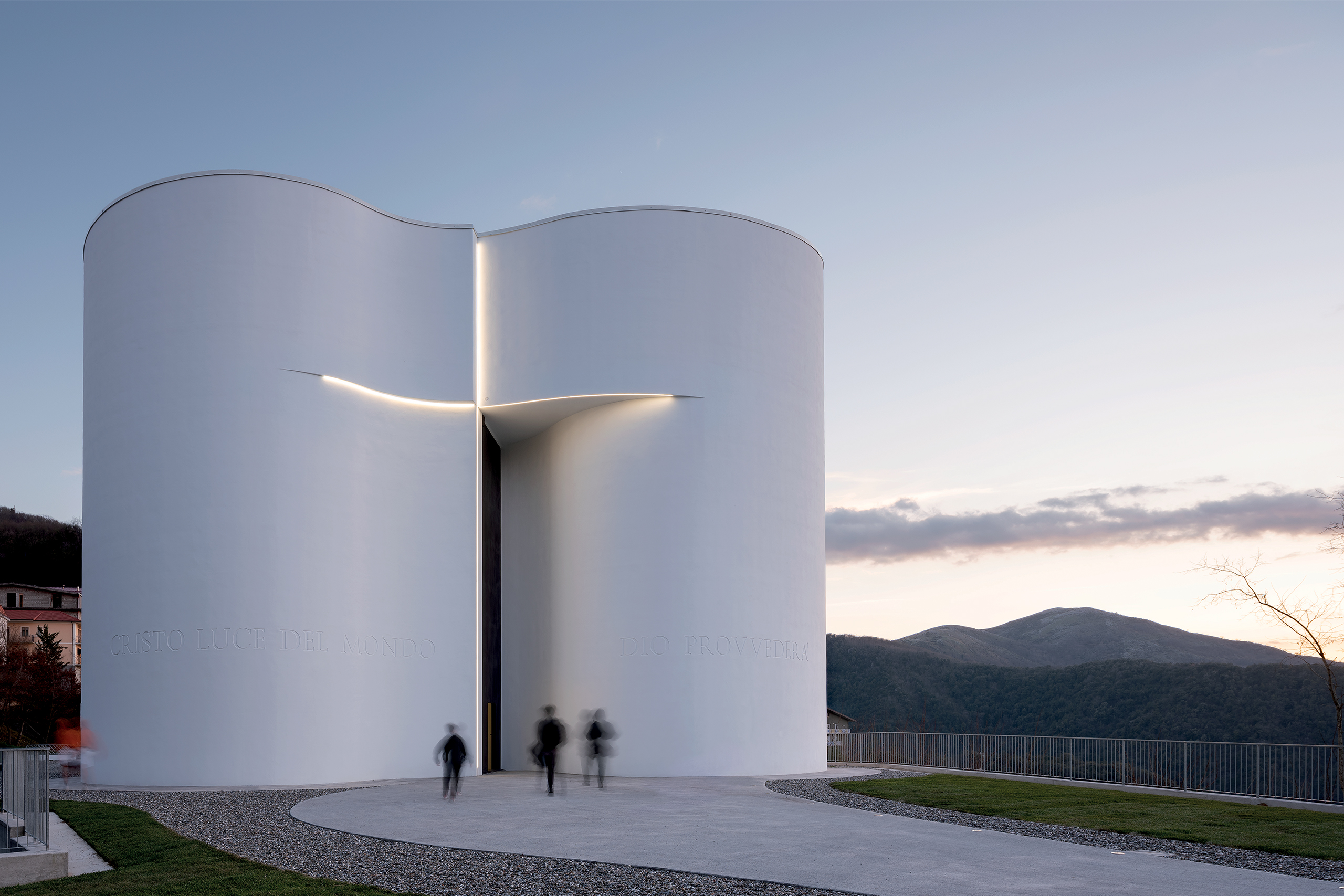
Padre Pio Church represents a major breakthrough in the construction of sacred architecture. Made with an unusual combination of different materials, it is the result of research and experimental work that make it an example of great innovation. The roof of the Liturgical Hall was made with arched construction elements formed from natural stone ashlars.
A complex work, made of an ancient material, a milestone in architectural history: the structure for the new Liturgical Hall dedicated to St. Pio of Pietralcina defies gravity, rising from the ground with slender arches made of natural stone ashlars. The church can hold about 7,000 worshippers and, despite its apparent architectural simplicity, is highly articulated. A series of arched construction elements, made up of equal modules in natural Apricena stone, characterizes the supporting structure of the upper hall, which opens onto the wide space of the outer churchyard and overlooks the lower crypt.
An original use of materials-stone, wood, steel, copper-and tireless teamwork make this space the obvious result of the union of different knowledge and skills.

Structural design work began in 1996, after the passing of the brilliant British structural engineer Peter Rice, Renzo Piano's friend and consultant, who bequeathed an idea, a concept, that was difficult to transform into a completed work.
Making this undertaking even more challenging was the seismicity of the site, which imposed higher safety conditions than a normal design.
Through initial computer analyses of three-dimensional models simulating structural behavior under all loading conditions, including the effect of high intensity earthquakes, it was possible to ensure that the work was truly executable.
From the initial stages, the design included a double order of stone arches arranged every ten degrees, according to radial lines converging at a fixed point. This design choice, in addition to characterizing the construction geometry of the entire complex, inevitably pushed to cross new frontiers in the use of the material deputed to the construction of the arches. In fact, the almost parabolic shape and the variable section of the arches are not the result of aesthetic choices, but are necessary expedients to better distribute the load of the roof over the arches and ensure their safety.
The arches, which support the roof, reach spans of 45 m and heights of up to 16 m.
They are made of Apricena, a very compact limestone quarried at great depths in nearby quarries in the town of the same name. The stone ashlars, in series of five or six pieces, have been assembled into maxi ashlars, mounted with interposition of mortar reinforced by stainless steel fibers and connected internally with powerful prestressing cables, capable of counteracting any energy of seismic events.
info@buromilan.com
stampa@buromilan.com
C.F./P.I. 08122220968
C.D. M5UXCR1
Via Thaon di Revel, 21
20159 Milan - Italy
T +39 0236798890
Santa Croce 458/A
30135 Venice - Italy
T +39 041 5200158